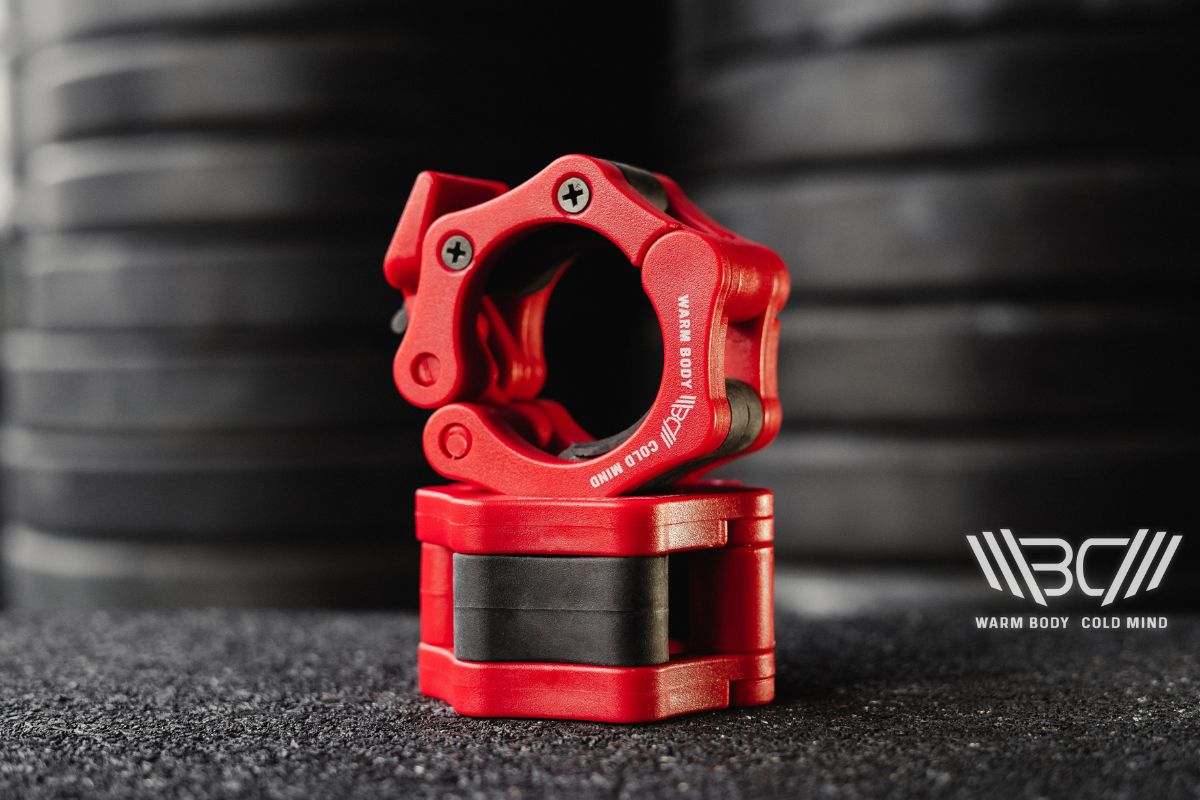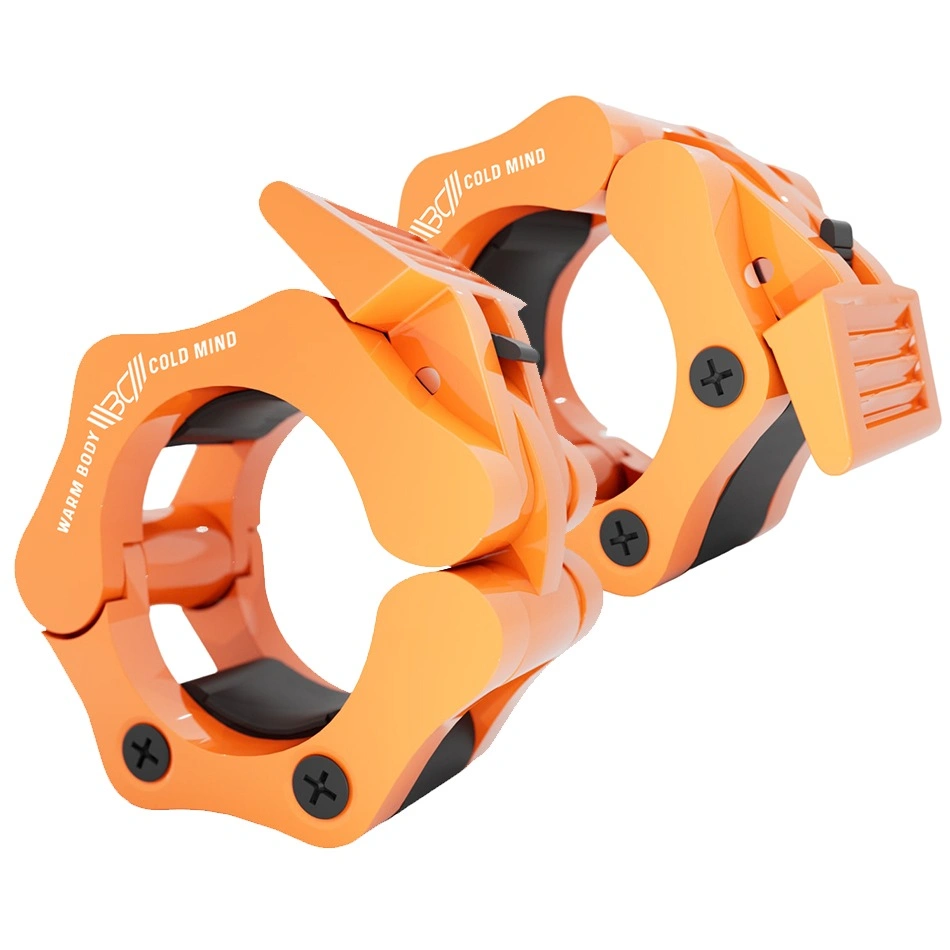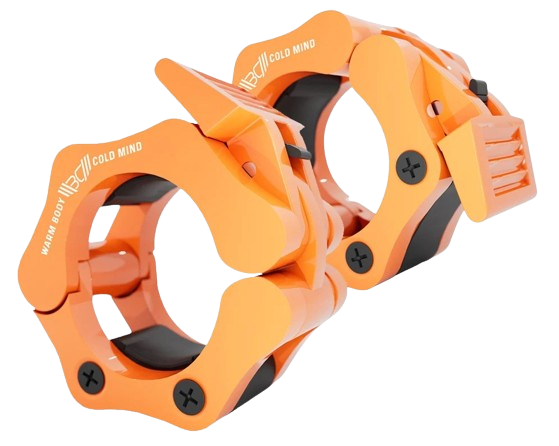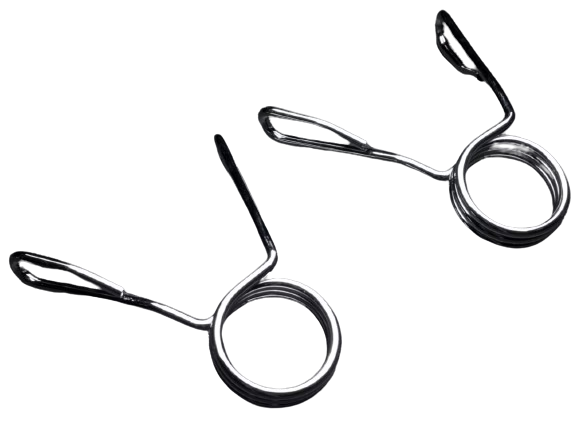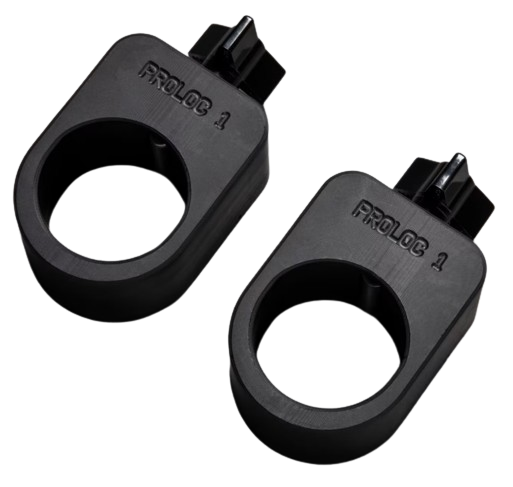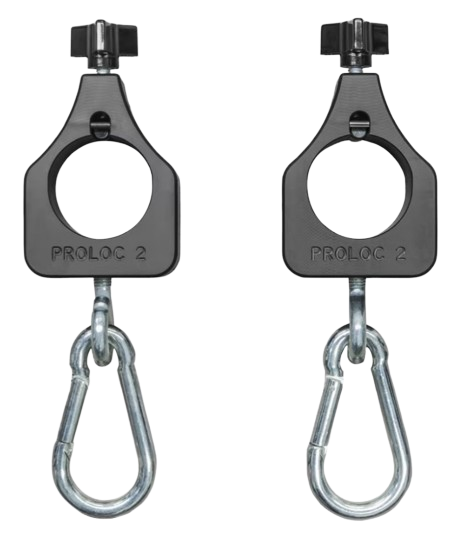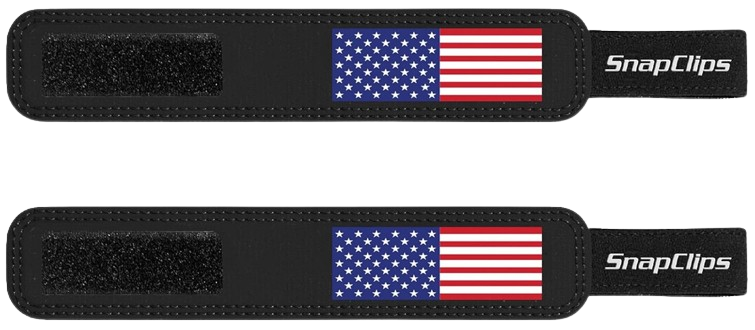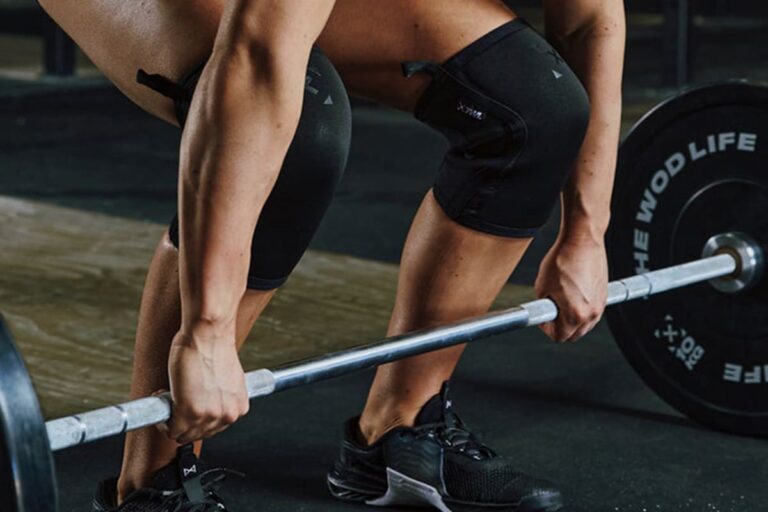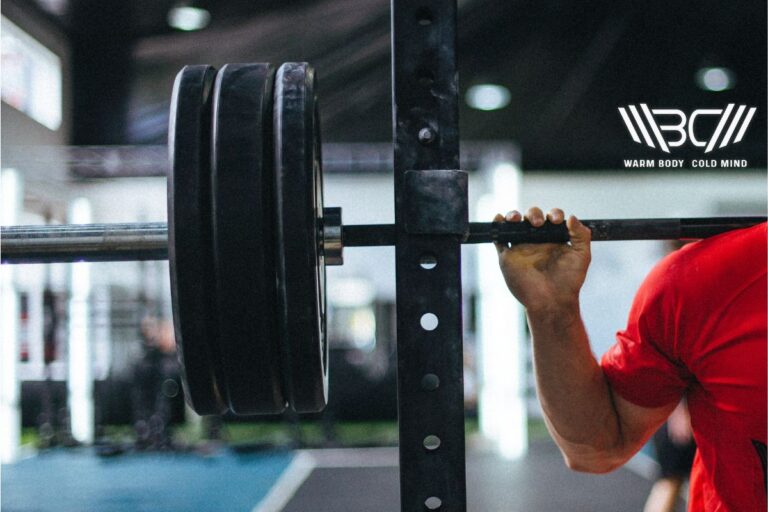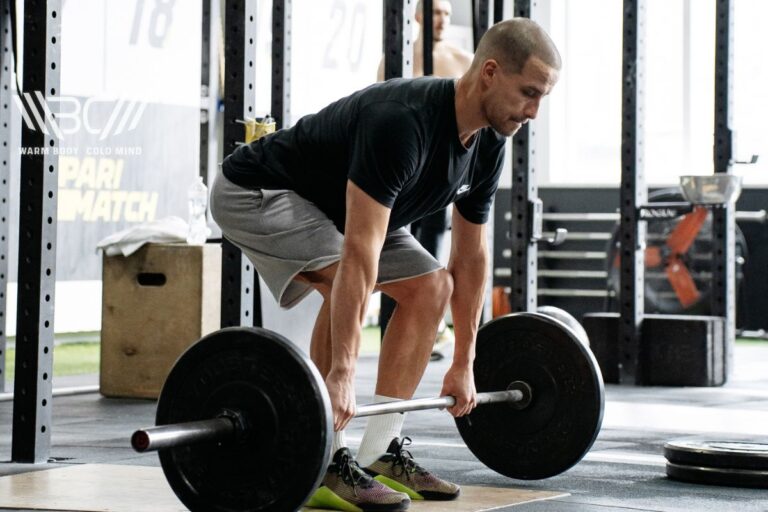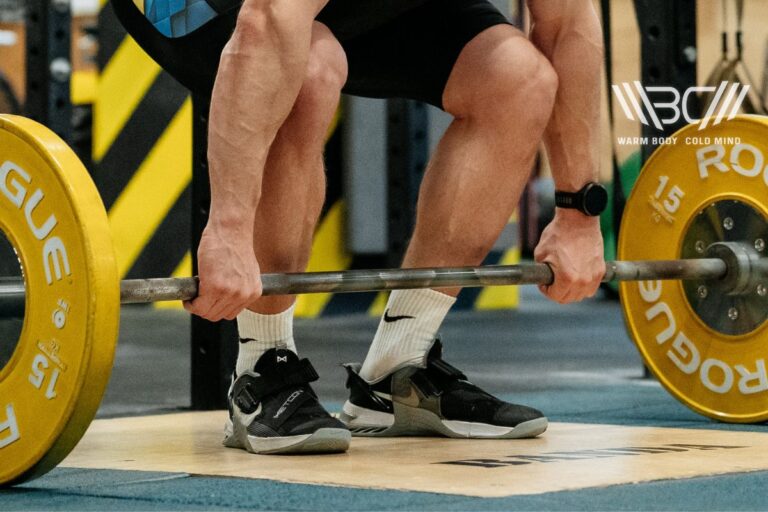Looking To Buy Barbell Collars? Here’s Your Ultimate Guide
If you’ve ever been mid-lift and felt the weights start to wobble you’re already aware of the importance of barbell collars.
Barbell collars or gym clamps make sure your weights aren’t about to fall off. Let us take you through the different options and help you make the right decision.
Are Barbell Collars Worth It? – Yes! Lifting heavy weights without barbell collars means they can slide off. That causes balance and safety issues. The best way to ensure you’re focused on form and maximizing lift is to prevent distractions or potential problems. Barbell collars are essential for this.
What Are Barbell Collars
Barbell collars, also known as gym clamps, weight clamps for bars, or even weight clips, are simple mechanisms which fit to the barbell after the weights have been loaded
Their main purpose is safety. Research shows that there is no significant maximum lift difference when using barbells or dumbells. However, many people prefer barbells simply because they inspire confidence.
You should note, studies recommend barbell lifts for resistance training.
There are six main types of collars. All of them secure the weights in place. We’ll help you understand the differences and decide which type works best for you.
Of course, these weight clamps for bars do add a little weight to your bar. That means they can help you push past your current max lift and set a new personal best.
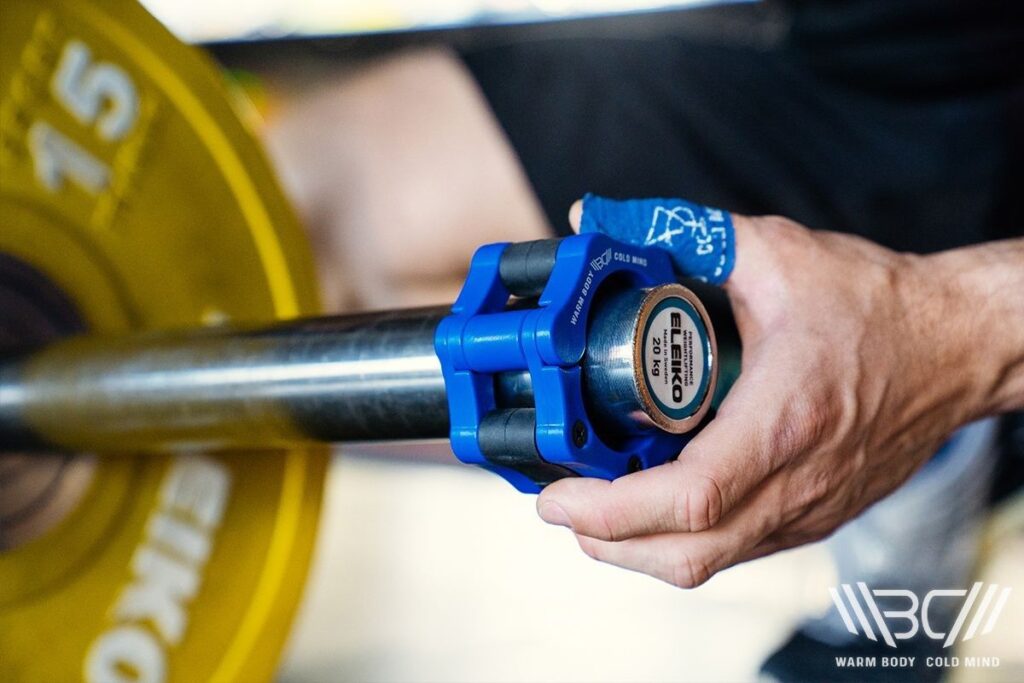
You may hear them referred to as Olympic bar clamps, metal barbell collars, aluminum barbell collars, Olympic bar clips, or even simply as weight clamps for bars. This just refers to the construction material or design. We’ll find out more about the types in a moment.
You should note, Olympic barbell collars are larger than standard collars as the Olympic bar is two inches, (50 mm), standard bars are one inch, (25 mm).
Who Needs Barbell Collars?
Anyone lifting weights should be using gym clamps. They are particularly important if you’re an athlete training for the Olympics, powerlifting competitions, or even the strongest man competition.
Olympic bar clamps are specifically designed for Olympic training. However, collars for Olympic bars can be used by anyone.
While any weightlifting exercise is likely to benefit from clamps, it’s particularly important when lifting overhead. That means exercises like the bench press and the snatch.
After all, according to studies, the loading of muscles on bench presses depends on the position of your body and whether the weight is ascending or descending.

Secure your gains with Warm Body Cold Mind barbell collars ensuring a locked-in grip for your lifts.
3 Benefits Of Using Collars For Barbell
There are several benefits to using barbell collars
✅ Better Safety
Add aluminum or metal barbell collars to your bar, outside the weights, and the plates can’t fall off. It only takes a slight shift in your weight to wobble the bar. This can result in a plate sliding off.
While it slides you’ll twitch, trying to keep it on. That increases the risk of an injury.
If the plate slides off the weight could hit you causing an injury or it could simply damage the floors, walls, and your rack.
Whether you use competition collars, aluminum barbell collars, or Olympic bar clips, the few seconds it takes to add them are worthwhile.

✅ Improved Balance
Moving plates on a bar causes you to readjust your balance. You’ll be focused on the weight rather than your form. This means your form and lifting ability will suffer, as well as increasing your risk of injury.
Your clamps, or Olympic barbell collars, will stop the weights from moving. That eliminates wobble and annoying noise.
You should note, studies have shown core stability training can improve dynamic balance and muscle endurance during weightlifting.
✅ Easy To Use
All barbell clamps are easy to add to your bar, although perhaps the spring collar weight is the simplest.
Being easy to use means there is no excuse for not using them.
Subscribe!
The latest reviews of must-have home gym training equipment, apparel, and supplements that will enhance your performance and bring you new results.
3 Disadvantages Of Using Collars For Barbell
While collars for Olympic bars (and other types of bars), are generally the right decision. There is one disadvantage you should know about.
❌ Inability To Slide Plates Off
When lifting, especially near, at, or over your max, you should have a spotter. That’s someone who will lift the weight for you if your strength fails.
Without a spotter, if you can’t get the barbell back to the rack then it may simply drop back onto you, potentially injuring you. This is especially true with the bench press, which scientists say is one of the most effective determinants of strength.
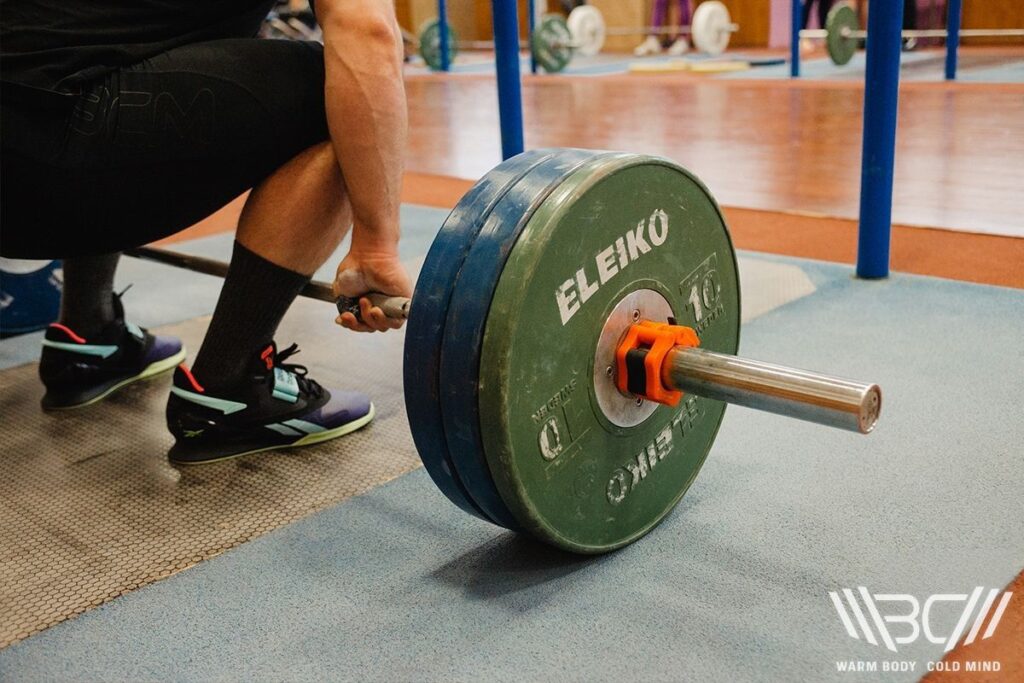
That’s when it’s worth avoiding the clamps. No clamps means you’ll be able to lean the bar, allowing the weights to slide off one end. You can then lift the bar the other way, avoiding yourself from being trapped and potentially crushed.
❌ Additional Time
We all know time is limited, it can be hard to squeeze in a workout. That’s why it’s tempting to skip the clamps. After all, those few moments it takes to slide them on and off for each weight change, add up.
❌ Weight Distribution
Clamps should secure the weights on the bar, making it safer. However, if you don’t secure them in place properly, they can still allow the plates to move.
That can cause imbalance, making you work harder and increasing your risk of injury.
6 Types Of Barbell Collars
1. Clamps
Clamp collars are often the preferred option of Olympians. They are made of metal with a scratch-resistant coating, each section is joined with stainless steel pins. Simply slot them over your bar and pull down on the small lever to lock them into position.
There are two rubber pads inside the clamps to ensure the clamp doesn’t move on your bar.
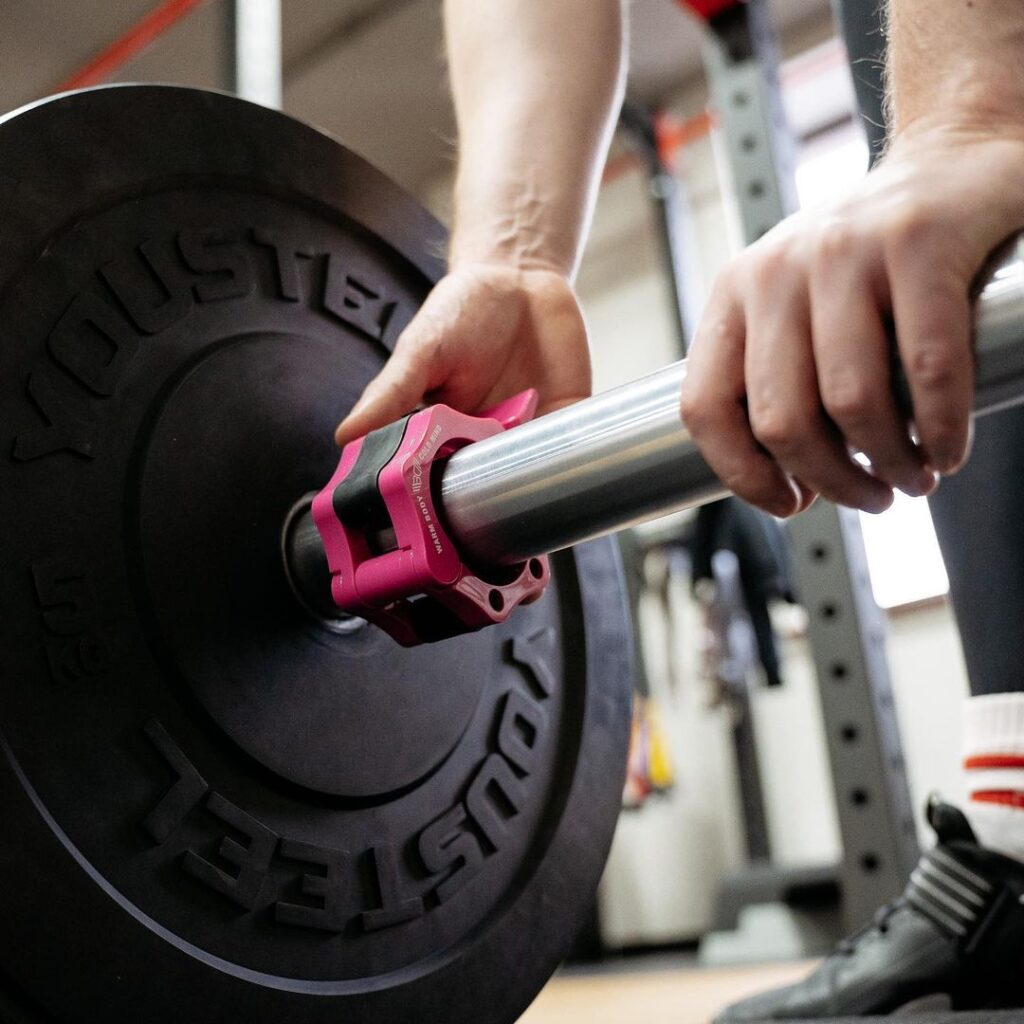
The stylish Warm Body Cold Mind clamps, designed by Olympic champion Oleksiy Torokhity, and supplied by us are designed to fit two-inch bars. They are available in a variety of colors, including pink, green, and blue.
Our clamps are also very safe as they have a quick-release mechanism, allowing you to release the clamp with one hand and slide the weights off, if necessary.
We’ve also designed them to be lightweight, avoiding them interfering with your lift.
2. Spring collars
There are a variety of spring collars on the market, these Rogue Spring Collars are a good example of the collar most preferred by beginners.
The spring collar weight is almost non-existent. They’re made of metal. It’s wound to create tension which is released by squeezing the two grips together.

Simply squeeze and slide it onto the bar. When in position, release the grips and the collar will stay in place.
This style is cheap and effective. However, if you tip the bar too far the plates can dislodge the clamp.
They need minimal maintenance and will generally last for years.
3. Magnet collars
Magnet collars are a great choice for gym owners. The collars can be attached to the rack, allowing users to choose whether to use them or not.
The Rogue Fitness Proloc 1 Magnet collars are made of 1.5” thick nylon and are designed as competition collars. They fit bars between 1.937” and 2.007”.
To add them to your bar you simply slide it on after the weight. There’s a small knob at the top of the collar, tighten this and the collar will stay stuck to the bar.
It’s secure but still fairly easy to remove when needed.
4. Chain collars
The chain collar is designed for people who want to add chains to their barbell. This can be as well as plates or instead of, the aim is to increase resistance.
The Rogue Fitness Proloc 2 chain collars fasten to the bar in the same way as the magnet collars. Simply slide them on and screw the knob tight.
However, they also have a carabiner attached to the bottom of the collar. This can accommodate chains up to 0.625” simply open the carabiner and slide the chain on. It’s then secure, allowing you to focus on form.
The magnet clamp part is designed to be used on bars between 1.937” and 2.007”. It’s made of 1.5” nylon and is easy to use as well as being virtually indestructible.
5. Competition collars
These collars are designed for professionals. The Rogue KG competition collars are some of the best of this type available. They weigh 2.5 kg each, effectively adding 5 kg to your bar.
These collars are IWF and IPF-approved and are between 3” and 3.625” wide.
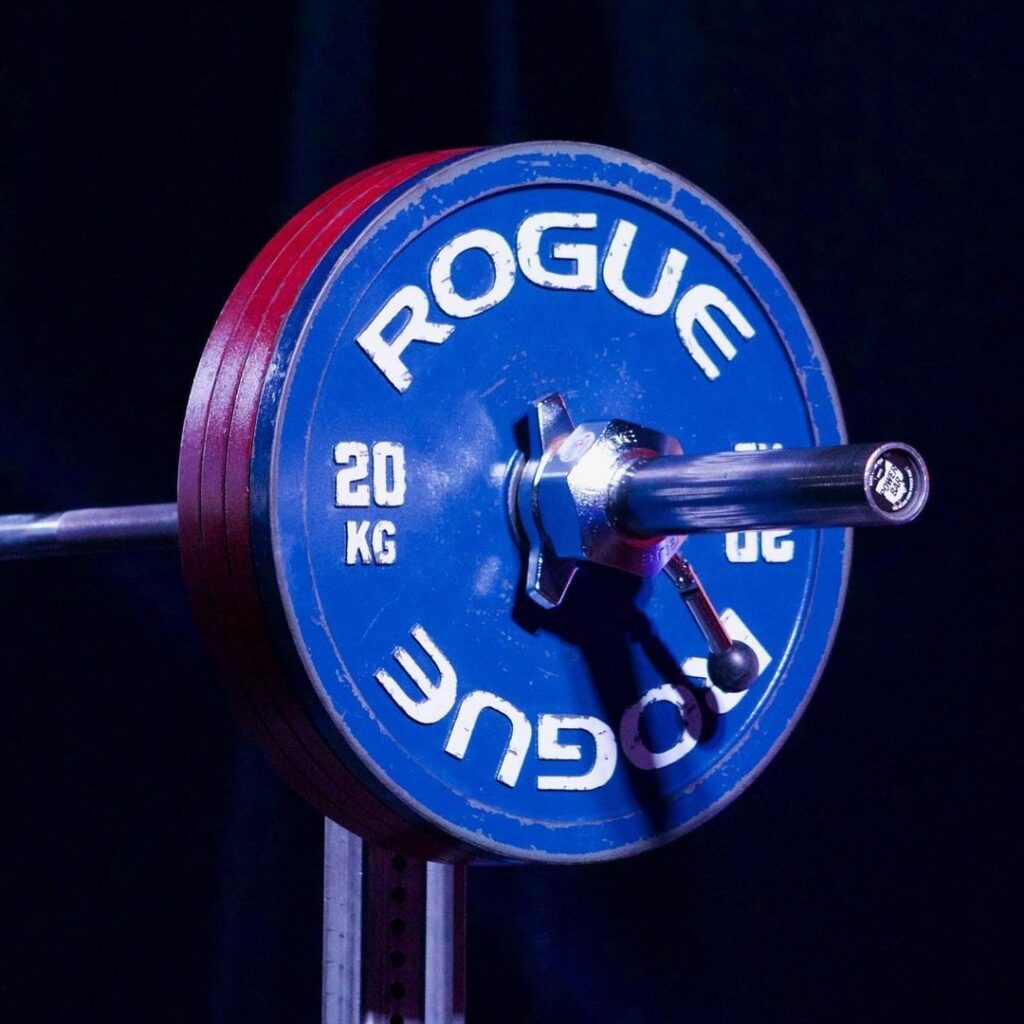
Each collar is made out of billet steel, that’s stronger than cast steel helping the collars last longer.
Fitting is fairly simple. The collar is slid onto the bar with the locking ring against the plates. You simply rotate the ball lever handle until the clamp is tight against the weights.
These are high quality and perfect for anyone entering competitions.
6. Velcro collars
Velcro collars are perhaps the easiest of all the clamps. The SnapClips Barbell collars even have the American flag emblazoned on them.
They’re designed to snap onto your bar. Simply slide the plates on then slap the strap against the bar next to the plates, it will clamp around the bar and you simply secure the Velcro to ensure it doesn’t move.

These clamps are made of Kevlar fabric, meaning they’re durable and strong. They are also very easy to carry with you.
The collars are surprisingly secure and adjustable. They can fit any bar from 1.5” to 2.5”. Best of all, they weigh almost nothing.
Comparison Table Of Gym Collars
| Collar Type | Compatibility | Ease of use | Safety | Price |
| Clamp | Olympic (two-inch) bars | Slide on and pull the lever down to secure | Quick release mechanism offers a high level of safety | Under $20 |
| Spring | Standard one-inch bars | Squeeze grips together and slide onto the bar | Secure, not easy to remove one-handed | Around $15 |
| Magnet | Fits two-inch bars | Easy tightening to the bar with a small knob | Unlikely to slip if tightened properly | Between $50-$75 |
| Chain | Fits two-inch bars, and has a carabiner for chains | Easy tightening to the bar with a small knob | Unlikely to slip if tightened properly | Around $75 |
| Competition | Fits two-inch bars | Slightly complicated due to plate positioning and clamping | Plates won’t move once clamps are in place | Around $200 |
| Velcro | Fits two-inch bars | Very simple | Some potential to slide | Between $25-$50 |
How To Choose The Best Barbell Collar For Your Needs?
There are several things to consider when choosing the best barbell collar.
1. Size Of Your Bar
The most obvious starting point is what size bar you have. That will dictate which type of clamps you should be using.
2. Weight
You probably already know what weight you can lift and what weight you would like to lift. Consider this when choosing a collar. You’ll want to make sure that the collar is capable of holding that much weight in position.
You should note the spring collar weight limit is generally the lowest of all the clamps.
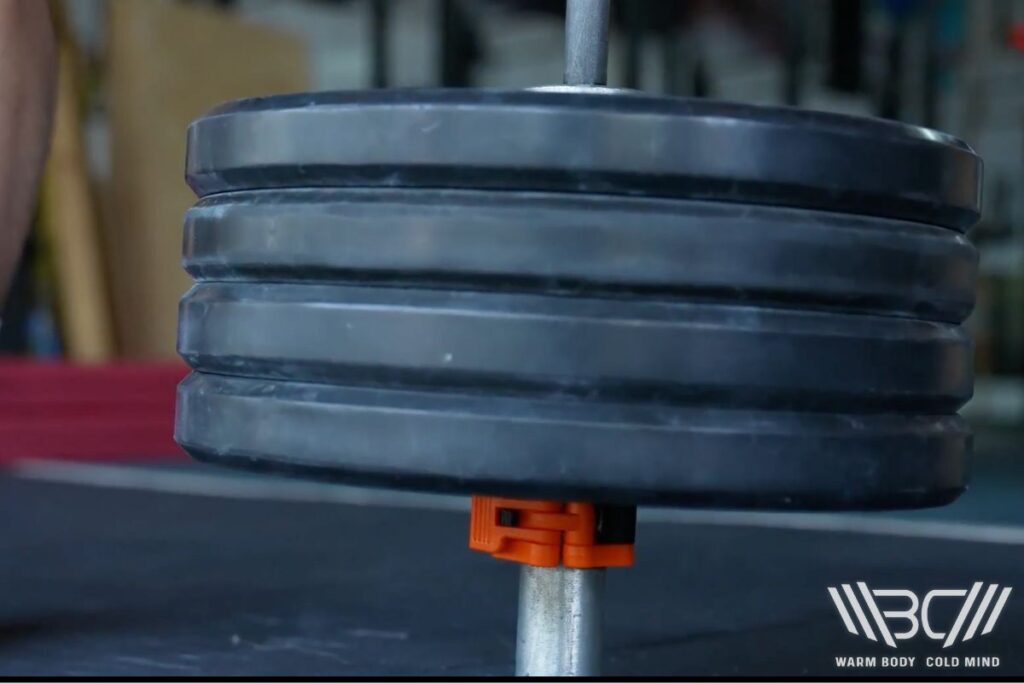
3. Budget
As you’ll note from the comparison table, the cost of barbell clamps can vary. You’ll need to set yourself a budget before choosing the right clamps.
FAQ
How Much Do Barbell Collars Weigh?
There is no simple answer to how much do barbell collars weigh. The weight depends on which type of collar you choose and its construction.
The weight should be marked when you purchase the clamps, ensuring you allow for it as part of your lift.
Are Barbell Collars Worth It?
In short, yes. Barbell collars will offer additional safety while you lift. That confidence allows you to lift heavier while reducing the risk of injury.
Conclusion
There are six main types of barbell collars. Use this guide to choose the one that suits your needs the best. Any of the above are worth trying although the clamp style is an excellent choice for most people.
Order a pair today, try them at your next gym session, and then tell us what you think!
References:
- Heinecke, Marc L, Mauldin, Matthew L. Hunter, Monica L. Mann, J. Bryan Mayhew, Jerry L. Journal of Strength and Conditioning Research 35():p S66-S71, February 2021. | DOI: 10.1519/JSC.0000000000003539.
- Solstad, T. E., Andersen, V., Shaw, M., Hoel, E. M., Vonheim, A., & Saeterbakken, A. H. (2020). A Comparison of Muscle Activation between Barbell Bench Press and Dumbbell Flyes in Resistance-Trained Males. Journal of Sports Science & Medicine, 19(4), 645-651. https://www.ncbi.nlm.nih.gov/pmc/articles/PMC7675616/.
- Król, H., & Gołaś, A. (2017). Effect of Barbell Weight on the Structure of the Flat Bench Press. Journal of Strength and Conditioning Research, 31(5), 1321-1337. https://doi.org/10.1519/JSC.0000000000001816.
- Szafraniec, R., Bartkowski, J., & Kawczyński, A. (2020). Effects of Short-Term Core Stability Training on Dynamic Balance and Trunk Muscle Endurance in Novice Olympic Weightlifters. Journal of Human Kinetics, 74, 43-50. https://doi.org/10.2478/hukin-2020-00125.
- Van Every, D. W., Coleman, M., Plotkin, D. L., Zambrano, H., Hooren, B. V., Larsen, S., Nuckols, G., Vigotsky, A. D., & Schoenfeld, B. J. (2022). Biomechanical, Anthropometric and Psychological Determinants of Barbell Bench Press Strength. Sports, 10(12). https://doi.org/10.3390/sports10120199.
Author: Sergii Putsov
PhD in Sport Science, Olympic weightlifting, Strength & Conditioning coach and fitness expert
Sergii Putsov is a professional weightlifter with over 20 years of experience and multiple national medals. He was a member of the National weightlifting team, competing in the 94 kg weight class. Sergii holds a master’s degree in Olympic & Professional Sport Training and a Ph.D. in Sport Science. After his athletic career, Sergii transitioned into coaching and is now responsible for designing training programs, writing blog articles, providing live commentary for international weightlifting competitions, and hosting sport and fitness seminars worldwide.

